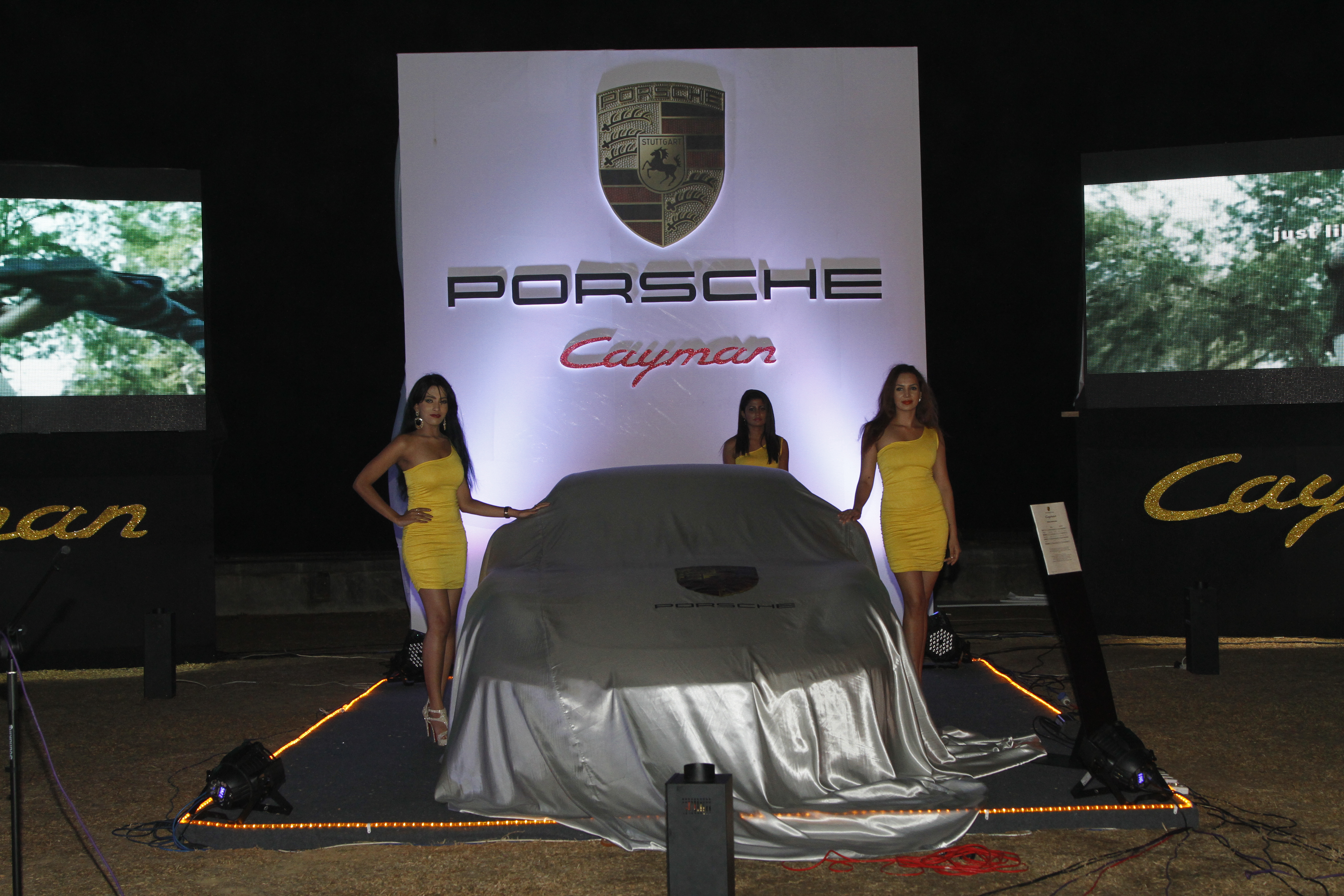Launch of the new Porsche Cayman in Sri Lanka
The third generation mid-engine sports car
Launch of the new Porsche Cayman in Sri Lanka
Sri Lanka. Eurocars (Pvt) Ltd, the official Porsche importer in Sri Lanka, launched the new Cayman on 15th August 2013 at The Kingsbury Hotel in Colombo. The third generation of the Cayman was unveiled amongst its two predecessor models, which were also displayed at the launch, to showcase the evolution of the Cayman models since its first introduction in 2005.
The all new Cayman made its debut in a sporty racing yellow that showcased its complete redevelopment with its longer wheelbase, wider track and larger wheels to enhance the driving performance.The new generation of the two-seat mid-engine sports car is available in two classic Porsche versions: the Cayman and the Cayman S.
Chairman of Eurocars (Pvt) Ltd, Arthur Senanayake said: “The new Cayman is lower and longer, lighter and faster, more efficient and more powerful than ever. It is no surprise that the new Cayman was named ‘2013 World Performance Car’, which was part of the World Car Awards (WCA), determined by an international panel of 66 automotive journalists from 23 countries. With the launch of the Cayman, we are positive that we will be able to put more Porsche cars on the roads of Sri Lanka.”

About the new Porsche Cayman
The new Porsche Cayman is once again promising to set new standards for driving performance in its class with an all-round new chassis, longer wheelbase and significantly lower weight compared to the previous model. The two-seater, newly developed sports car model features innovative lightweight body design.
The new Cayman is up to 30 kg lighter, depending on the specific model and equipment, and it consumes up to 15 per cent less fuel per 100 km than the previous model despite more powerful engines and better driving performance. In addition, the body is 40 per cent stiffer, which further enhances the sportiness of this driving artist in bends.
An overview of its key data:
Cayman
2.7-litre six-cylinder boxer engine with 275 hp (202 kW); rear-wheel drive, six-speed manual transmission, optional seven-speed Porsche Doppelkupplungsgetriebe (PDK); acceleration from zero to 100 km/h in 5.7 seconds, with PDK in 5.6 seconds (5.4 seconds with Sport Chrono package); top speed 266 km/h, with PDK 264 km/h; fuel consumption (NEDC) 8.2 l/100 km, CO2 192 g/km; with PDK 7.7 l/100 km, CO2 180 g/km.
Cayman S
3.4-litre six-cylinder boxer engine with 325 hp (239 kW); rear-wheel drive, six-speed manual transmission, optional seven-speed Porsche Doppelkupplungsgetriebe (PDK); acceleration from zero to 100 km/h in 5.0 seconds, with PDK in 4.9 seconds (4.7 seconds with Sport Chrono package); top speed 283 km/h, with PDK 281 km/h; fuel consumption (NEDC) 8.8 l/100 km, CO2 206 g/km; with PDK 8.0 l/100 km, CO2 188 g/km.
Porsche is also upgrading the Cayman with new optional features. For the first time, the sport coup is available with Adaptive Cruise Control (ACC), which controls the distance to the car ahead in traffic and vehicle speed, as well as a specially developed Burmester sound system. Another new feature for the Cayman is the optional Entry & Drive keyless system that can be factory installed
Design: new proportions, prominent lines
The new Cayman is more distinctive than ever. Its proportions were moderately changed to emphasise its character as a sport coup. The 60 mm longer wheelbase and broader track width give the Cayman a lower and more extended look in combination with the ten millimetre lower (Cayman S: eleven mm) body height. Nonetheless, the two-seat sports car is still compact, having grown just 33 mm in length. The body’s front overhang was shortened 26 mm. Other visual features reflecting the car’s more enhanced driving performance include an extended wheelbase with shorter overhangs and 18-inch or 19-inch diameter wheels with tyres that have larger rolling circumferences.
Its styling is marked by precise lines and razor-sharp sculpted edges. They emphasise the car’s low, extended silhouette with the windscreen shifted forward by approximately 100 millimetres and a roof line that reaches far back. Typical of the more advanced styling is the shoulder line, which runs from the wings – which flare strongly upwards – towards the rear side panels. The door mirrors are now positioned near the top shoulder. Especially expressive and characteristic are the dynamic recesses in the doors, which guide induction air into the distinctive air scoops on the rear side panels and from there directly to the engine. This is the most prominent visual feature that highlights the mid-engine concept.
From the front end, the new Cayman is marked by its dominant cooling air inlet to the left and right at the front end, which increase in size towards the sides of the car. Integrated in them, far outboard, are the round headlights with four-point daytime running lights or position lights, an unmistakable identifying feature of the new Cayman. Just as unique to the new generation sport coup are the large, low rear lid made of aluminium and the rear section with its wrap-around edges. Above the rear window, an LED brake light spanning the entire window width warns traffic behind. Mounted directly to the rear lid is the thin blade of the rear spoiler, which in contrast to that of the Boxster is higher and deploys at a steeper angle. The overall appearance of the Cayman is more independent than before, and it is well-differentiated from the previous model. The newly designed tailpipes of the exhaust system visually terminate at a low, central point. The Cayman gets an oval tailpipe, while the Cayman S has two-branch dual tailpipes.







